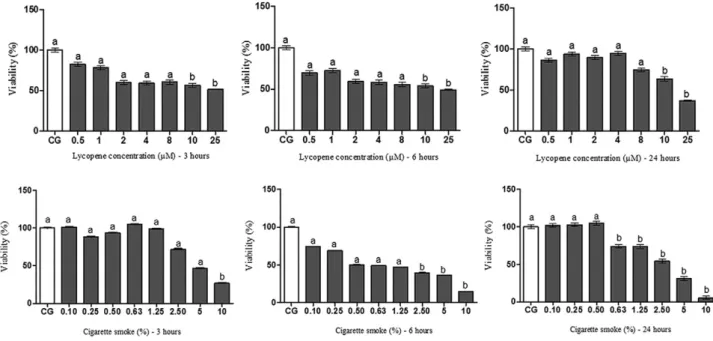REPOSITORIO INSTITUCIONAL DA UFOP: The antioxidant and anti-inflammatory properties of lycopene in mice lungs exposed to cigarette smoke.
Texto
Imagem



Documentos relacionados
Swiss mice not exposed to tannery effluent (control group), and (C) Novel object recognition indices of male Swiss mice exposed or not to tannery effluent, calculated
The animals were divided into three groups: Group 0 received no therapeutic intervention (control), while Group 1 received a single dose of 40 mg/kg meropenem and Group 2 received
METHODS: Twenty rats were distributed into two study groups (N=10): control group (CG), that was not exposed to tobacco smoke and used as normal standard for biochemical
uniflora extracts, 20 Swiss mice were distributed into four groups (n=5) receiving by gavage alkaloids, flavonoids, saponins, or saline (control group).. After administration of
Analysis of cellular influx in pulmonary parenchyma between the first day of exposure to CS (CS1D), second day of exposure to CS (CS2D), third day of exposure to CS (CS3D), fourth
The mice were divided into seven groups, each com- posed of 10 mice, as follows: group 1: normal control mice; group 2: infected untreated control mice; group 3: infected
Animals were divided into four groups: Control Group (CG, n=3): the gastrocnemius muscle was not submitted to contusion and received no treat- ment; Lesion Group (LG, n=10): the
The experiments performed on the younger male mice revealed that the skin strength of untreated were significantly greater than the skin strength of vehicle control group mice,